登録情報 データベース : PDB / ID : 2mfqタイトル NMR solution structures of FRS2a PTB domain with neurotrophin receptor TrkB BDNF/NT-3 growth factors receptor Fibroblast growth factor receptor substrate 2 キーワード 機能・相同性 分子機能 ドメイン・相同性 構成要素
/ / / / / / / / / / / / / / / / / / / / / / / / / / / / / / / / / / / / / / / / / / / / / / / / / / / / / / / / / / / / / / / / / / / / / / / / / / / / / / / / / / / / / / / / / / / / / / / / / / / / / / / / / / / / / / / / / / / / / / / / / / / / / / / / / / / / / / / / / / / / / / / / / / / / / / / / / / / / / / / / / / / / / 生物種 Homo sapiens (ヒト)手法 / Model details lowest energy, model1 データ登録者 Zeng, L. / Zhou, M. ジャーナル : Proteins / 年 : 2014タイトル : Structural insights into FRS2 alpha PTB domain recognition by neurotrophin receptor TrkB.著者 : Zeng, L. / Kuti, M. / Mujtaba, S. / Zhou, M.M. 履歴 登録 2013年10月18日 登録サイト / 処理サイト 改定 1.0 2014年3月5日 Provider / タイプ 改定 1.1 2014年6月25日 Group 改定 1.2 2024年11月6日 Group Data collection / Database references ... Data collection / Database references / Derived calculations / Structure summary カテゴリ chem_comp_atom / chem_comp_bond ... chem_comp_atom / chem_comp_bond / database_2 / pdbx_entry_details / pdbx_modification_feature / pdbx_nmr_spectrometer / struct_conn / struct_ref_seq_dif Item _database_2.pdbx_DOI / _database_2.pdbx_database_accession ... _database_2.pdbx_DOI / _database_2.pdbx_database_accession / _pdbx_nmr_spectrometer.model / _struct_conn.pdbx_leaving_atom_flag / _struct_ref_seq_dif.details
すべて表示 表示を減らす
 データを開く
データを開く 基本情報
基本情報 要素
要素 キーワード
キーワード 機能・相同性情報
機能・相同性情報 Homo sapiens (ヒト)
Homo sapiens (ヒト) データ登録者
データ登録者 引用
引用 ジャーナル: Proteins / 年: 2014
ジャーナル: Proteins / 年: 2014 構造の表示
構造の表示 Molmil
Molmil Jmol/JSmol
Jmol/JSmol ダウンロードとリンク
ダウンロードとリンク ダウンロード
ダウンロード 2mfq.cif.gz
2mfq.cif.gz PDBx/mmCIF形式
PDBx/mmCIF形式 pdb2mfq.ent.gz
pdb2mfq.ent.gz PDB形式
PDB形式 2mfq.json.gz
2mfq.json.gz PDBx/mmJSON形式
PDBx/mmJSON形式 その他のダウンロード
その他のダウンロード 2mfq_validation.pdf.gz
2mfq_validation.pdf.gz wwPDB検証レポート
wwPDB検証レポート 2mfq_full_validation.pdf.gz
2mfq_full_validation.pdf.gz 2mfq_validation.xml.gz
2mfq_validation.xml.gz 2mfq_validation.cif.gz
2mfq_validation.cif.gz https://data.pdbj.org/pub/pdb/validation_reports/mf/2mfq
https://data.pdbj.org/pub/pdb/validation_reports/mf/2mfq ftp://data.pdbj.org/pub/pdb/validation_reports/mf/2mfq
ftp://data.pdbj.org/pub/pdb/validation_reports/mf/2mfq リンク
リンク 集合体
集合体
 要素
要素 Homo sapiens (ヒト) / 遺伝子: FRS2 / 発現宿主:
Homo sapiens (ヒト) / 遺伝子: FRS2 / 発現宿主: 
 Homo sapiens (ヒト) / 参照: UniProt: Q16620, receptor protein-tyrosine kinase
Homo sapiens (ヒト) / 参照: UniProt: Q16620, receptor protein-tyrosine kinase 試料調製
試料調製 解析
解析 ムービー
ムービー コントローラー
コントローラー





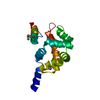
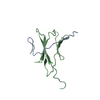
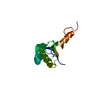



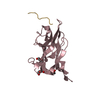
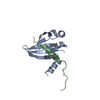
 PDBj
PDBj













 NMRPipe
NMRPipe